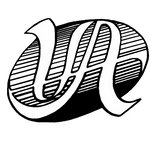
Echoes Thru Time by Larry Selman
Image Size: 18"w x 10"h
Gicleé Canvas Edition: 200 Signed and Numbered
Open Edition
USASMA Class Edition: 600 Signed and Numbered - SOLD OUT
Artist Proof Edition: 55 Signed and Numbered - SOLD OUT
Public Edition: 575 Signed and Numbered - SOLD OUT
The Sergeants Major from Yorktown to Baghdad
The Legacy gift of Class55 of the Sergeants Major Academy 2005 illustrates the changes in the Sergeants Major uniform, weapons, and integration since 1778. Originally a British rank adopted by the Continental Army during the Revolution, the rank was distinguished by one red epaulet on the right shoulder, red waist sash and short sword.
By the end of the American Revolution the insignia was replaced by two white epaulets with silver trim. During the Mexican War stripes replaced the epaulets and were worn points up and during the Civil War the stripes were points down, however the red sash and short sword were still carried.
The Indian War “Buffalo Soldier” who walked the plains wears the winter campaign clothing of that time. Most likely born into slavery and freed after the war he now travels the plains looking for the original inhabitants of the land to return to reservations.
The Spanish American War is the end of the century of the 19th Century marked the beginning of a period of change for the American Army. Saying good buy to the traditional blue as a uniform, the Army formally adopted Khaki as the new standard. The dawn of America as a global superpower begins during World War I with innovations like the first use chemical weapons, fixed wing aircraft and introduction of tank warfare.
During the 1920’s Army reorganization shelved the rank of Sergeant Major until the mid 1950’s when it was replaced by the rank of Master Sergeant as the senior NCO rank. During this time the responsibilities to subordinate troops or to the officers above did not change and as the American Army fought World War II and Korea. Its NCOs carried on with difficult duties under trying circumstances distinguishing themselves in the same high manor as before.
The Cold War and Viet Nam conflict saw a greater increase in opportunities in the expanded Army and the inclusion of more women in senior leadership positions and continues into the present.
The print has as its core the same basic principle followed by every NCO from 1778 to today, the principal of leadership by word and action. This notion carries with it the warrior ethos and sets a standard to be met by each succeeding generation. If it were possible to join the NCOs of the past with those of the present the bond of kinship would be unmistakably clear.
While clothing and equipment have changed, the people over time the people who represent and serve the American Army have continued to be its most shining example of duty, honor and country.
